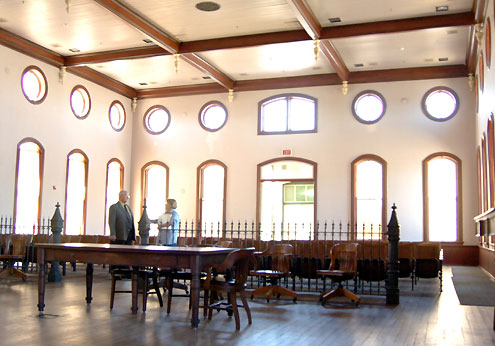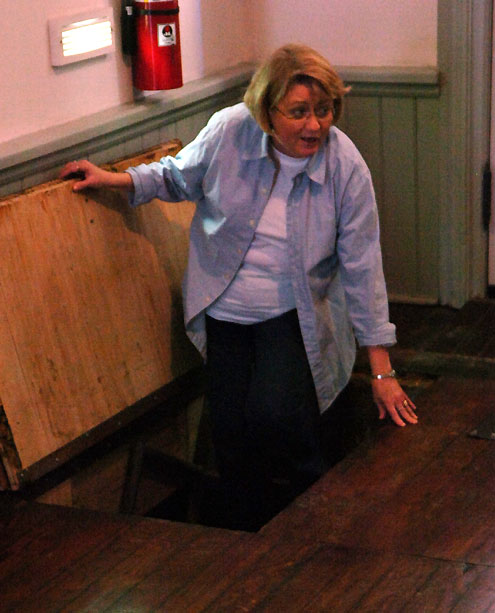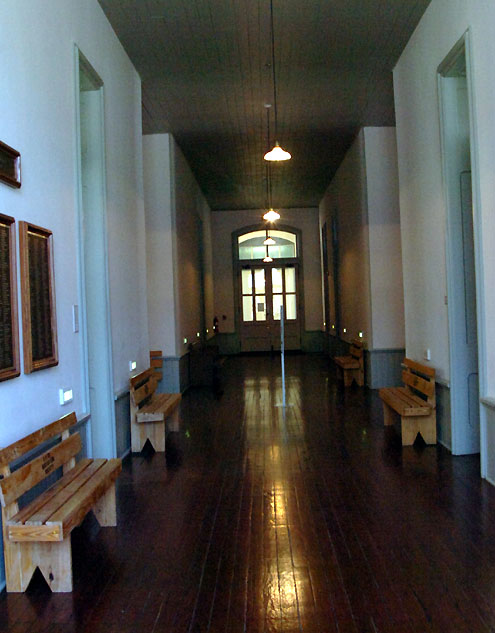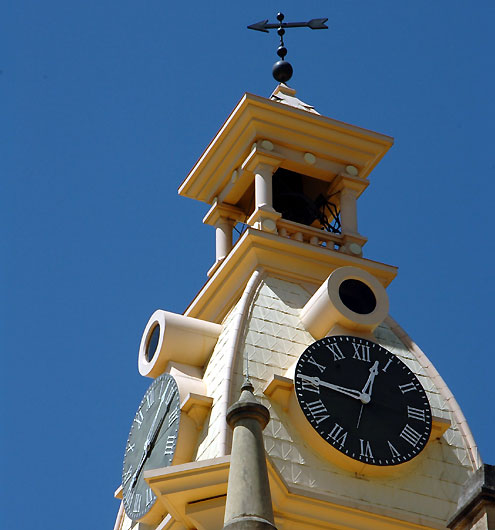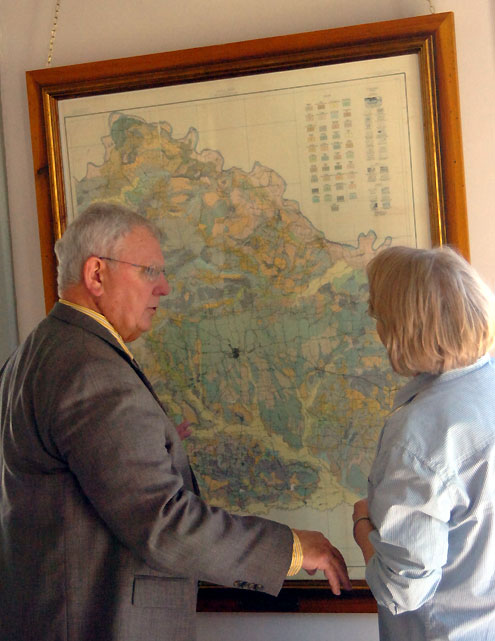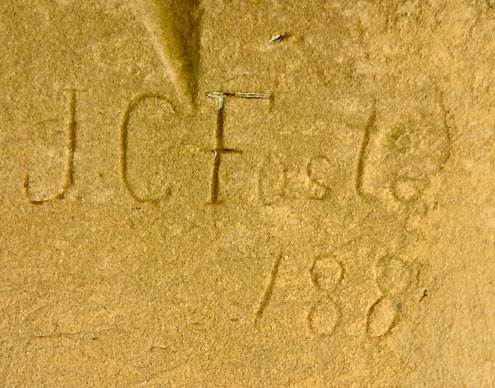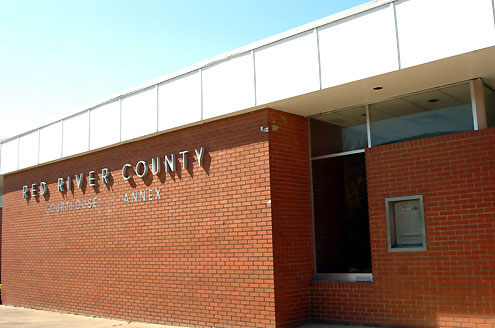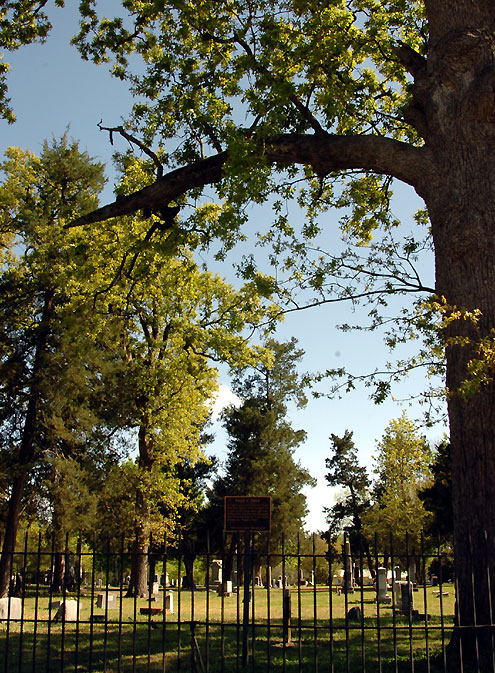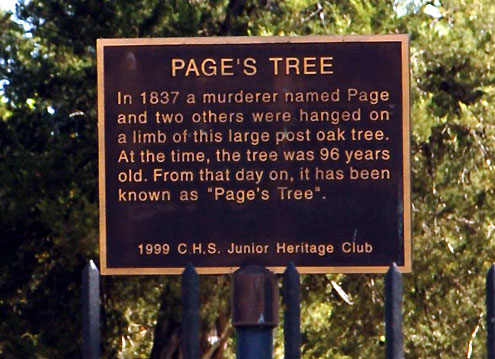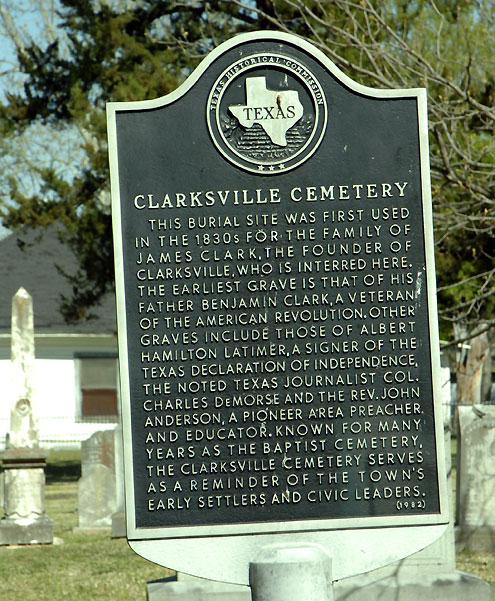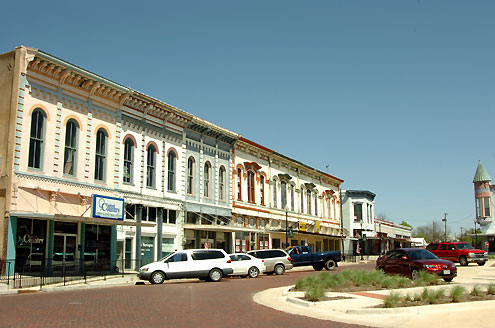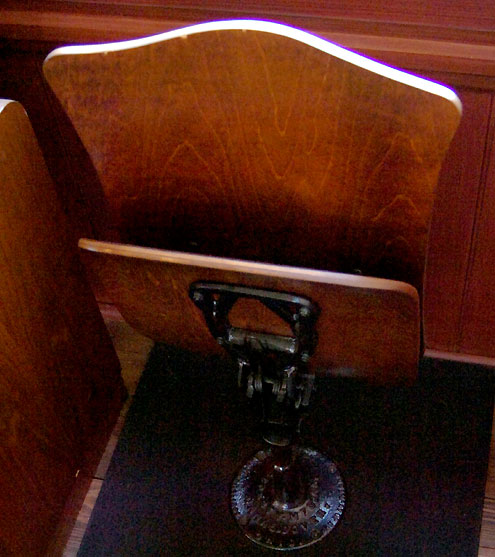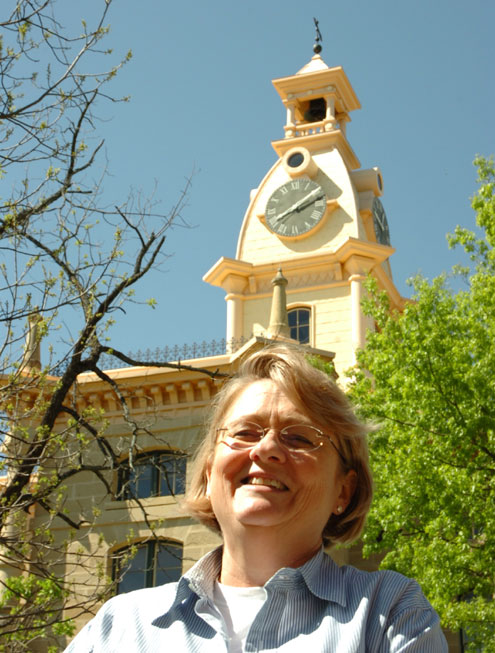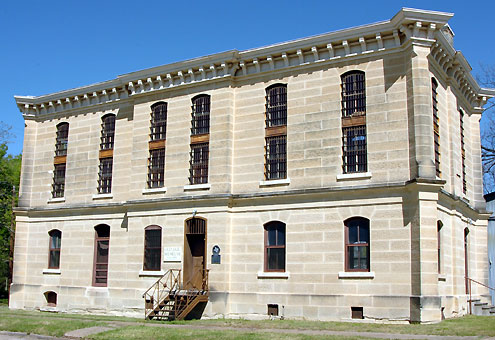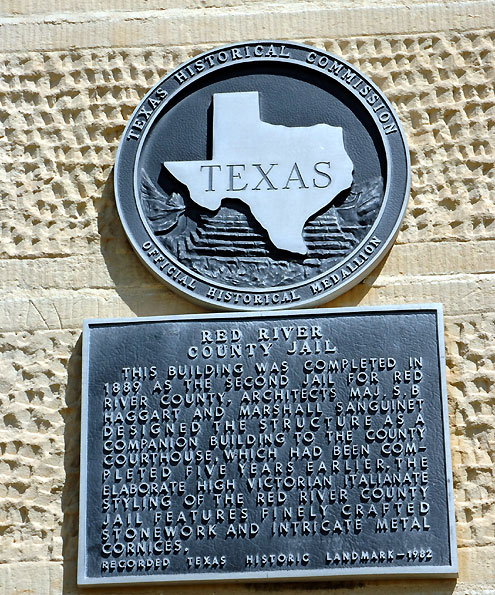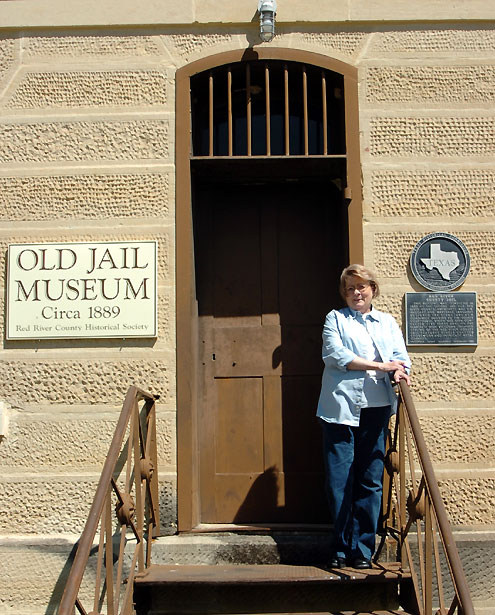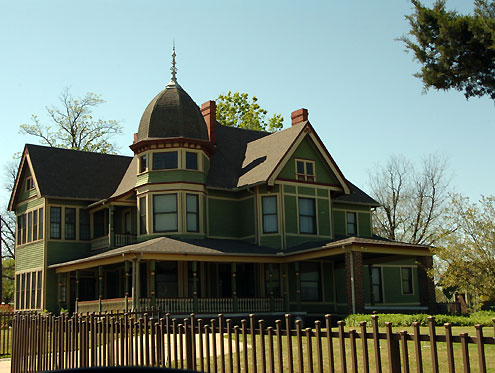Fannin County and Red River share more than a great deal of history; they have also shared a lot of limestone.
Fannin County was carved out of Red River County in 1838, so it seems only fitting that the 1884-85 Red River County Courthouse was carved out of Fannin County Limestone.
In all, 39 counties were formed out of Old Red River County, which earned it the moniker of "Mother County" among historians.
Red River County residents of historical note include Richard Ellis, the man elected president of the Convention of 1836 that drafted the Texas Declaration of Independence and Texas Constitution at Washington-on-the Brazos; Collin McKinney, one of the five men chosen to draft the Texas Declaration of Independence and, at 70, the oldest delegate to sign it; Bailey Inglish, founder of Bonham; and Travis Wright, a prominent land owner in Red River, Lamar and Fannin counties and one of the principle investors behind the Memphis, El Paso and Pacific Railroad which was sold to Texas & Pacific Railroad in 1873, the same year tracks reached Bonham.
And, while we had "Mr. Sam," they had "Cactus Jack."
Fannin County will always proudly proclaim to be the home of former Speaker Sam Rayburn and Red River County residents are just as proud that former Vice President John Nance Garner was a native son.
Although Barbara McCutcheon is a member of the Fannin County Historical Commission, it wasn't a quest for history that brought her to Clarksville, county seat for Red River County; it was courthouses. This excursion was part of McCutcheon's responsibility as chairman of Fannin County Courthouse Restoration Committee.

Built in 1884 from limestone quarried near Honey Grove, the Red River Courthouse is one of the 10 oldest courthouses in Texas. Records located in the Red River Courthouse date back to 1836; therefore this was one of the first courthouse restoration projects undertaken by Texas Historical Commission.
The Red River Courthouse restoration was completed in 2002. There is no debate that the three-story, pale yellow limestone structure is a monument to this region's unique place in Texas history. But there is a difference of opinion about whether or not this can truly be considered a working courthouse.
To start with, only two employees, the county judge and his secretary, are housed in the Red River Courthouse full-time. And the first month's electricity bill in a place where only two people work? How does $5,000 grab you?
Plus, you can't understand what a budget-buster that is without noting that the 2000 census showed just over 14,000 residents in Red River County and a median income per household of $27,558.
Sure, times are tough all over, but the downward spiral of the economy during the past five years hit Clarksville particularly hard. Even Wal-Mart shut down here. After servicing the community for 31 years, the town's Wal-Mart closed its doors December 31, 2007. Not only did the county lose 68 jobs, but during the summer of 2008 when gas prices skyrocketed, the Red River County residents had to drive to Paris, Texas or Idabel, Oklahoma to have prescriptions filled.
Red River County Judge Morris Harville is a powerfully built man that doesn't mince words. Ask him what advice he might have for counties considering courthouse restoration projects and one eyebrow raises menacingly. The verdict is harsh.
"You better have a very, very good maintenance department and an ample budget," Judge Harville remarks. "The warmest we could ever get it on a cold day was 62 degrees."
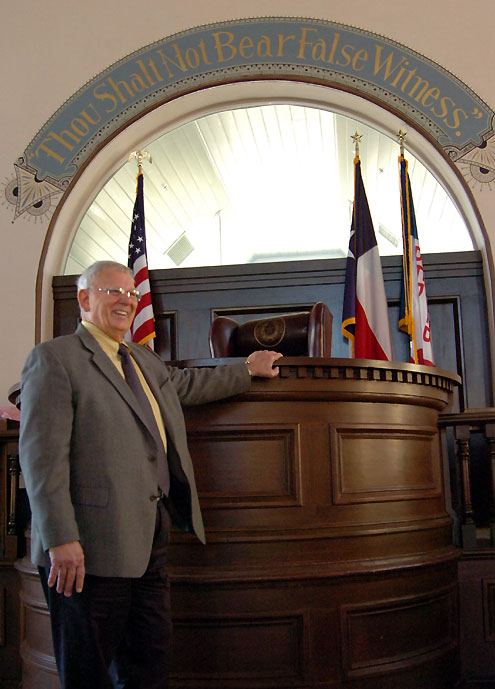
Texas Historic Commission restored the courthouse to the exact condition of the building in 1885, which means it is dark, breezy and leaves you looking for a wood-burning stove you can back up to.
Several common sense modifications suggested by the county government that would be occupying the premises---double pane glass, shutters, even carpeting in a courtroom that everyone agrees has "horrible acoustics"---were all nixed by an unrelenting Texas Historic Commission.
Pointing to a modern sprinkler system that was added during the restoration, and with a bit of frustration edging into his voice, Judge Harville says, "If they can put in a sprinkler system, there have to be other concessions they can make."
But step into the cavernous courtroom and the frustration in the judge's voice is replaced with obvious pride, and deservedly so. Judge Harville believes, when you measure by cubic feet, Red River County has the largest courtroom in Texas.
Somewhere out there he is certain a director or producer is searching for a setting exactly like this one.
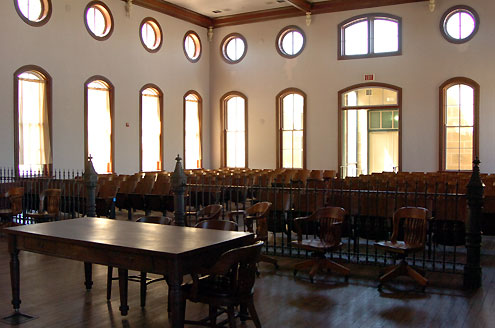
"Come to Red River County to make the movie," the judge says with a smile. "We've got the courtroom."
In real life, however, everyone that has to make a living in this echo chamber winces at the mention of the courtroom. With a little historic perspective, the creative genius of the original architect, William H. Wilson of Dallas, becomes clear. When you pack this courtroom and open all the windows, the acoustics perform admirably. In 1885, trials were scheduled after all the crops were laid by. Not only was every seat filled, but initials carved on the outside window ledges are a testament to the fact that people were even crammed into the second-floor windows.
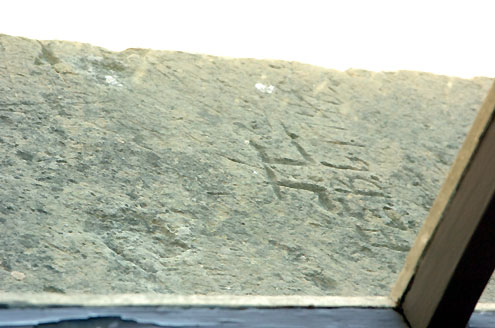
"It was a show...the best show in town," Judge Harville wistfully notes.
The 102nd District Court, the 6th District Court and the Red River County Court all use the historic courtroom.
It should be noted that the Hopkins County Courtroom had the same problem with acoustics, but the county has convinced the Texas Historical Commission to allow them to purchase "room-size" rugs to dampen the echoes.
Since Red RIver County Courthouse was one of the first courthouses to be restored under the Texas Historical Commission's Courthouse Preservation Program, perhaps architects and the Commission have become more cognizant of the compromises necessary to make an historic building functional and energy efficient.
As the tour continues, Judge Harville points to a set of hallway lights which were another concession to historic accuracy. Additional lighting was necessary in the dark halls; however the light fixtures that were installed were already off the market. Some of the lights are flickering.
While the judge readily admits most differences of opinion regarding the restoration was a debate over how to be as historically accurate as possible without crossing the line and becoming impractical, this problem leaves him shaking his head.
"You should be able to just change a light bulb," the judge states in an exasperated tone, "instead of spending a day drilling and replacing the entire fixture."
As the tour ends, McCutcheon asks the judge for his opinion about the Red River Courthouse restoration.
"I'm incredibly proud of it," Judge Harville said. "It's beautiful. The people here are very proud of it. The problem is the cost of upkeep and utilities."
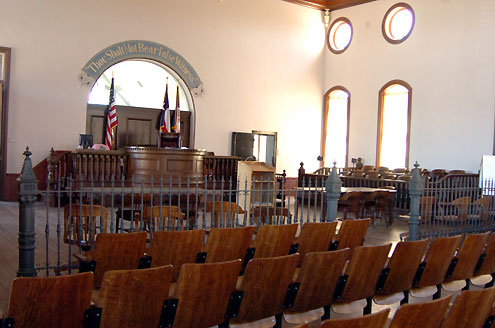
So, how did Ms. McCutcheon feel after her fact-finding mission?
"I was pleased to learn that even with the issues confronted by Red River County in regard to restoration of their courthouse, they are still glad they did it," she said. "As the judge said, It has brought 'pride' back to the community. I would like for the good people of Fannin
County to feel some of that same pride."
An important factor that may tend to detract from the impact this restoration had on the surrounding community is that the 1885 Red River County Courthouse was located three blocks north of the town square in what was a residential section in 1884. Still, to paraphrase a line from a movie, if you build it they will come.
An attorney located on the south side of the Red River County Courthouse, Dan Meehan, says tourists are a fairly common sight.
"You'd be surprised how many people stop and take photos," noted Meehan.
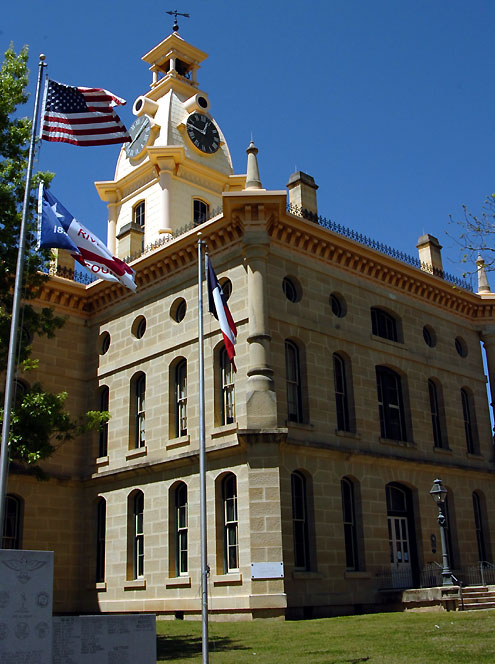
Even though it is a bit off the beaten path, people can spot the towering temple of justice as they drive through Clarksville on U.S. 82 and sometimes the detour to the courthouse will even turn into a visit to artist Roger Scott's shop, Aleksander Lieshi’s Italian Bistro or Larry Algaier’s Square Corner Artworks.
Plus, no journey to study justice in Red River County would be complete without a visit to the hanging tree on the northwest corner of the Clarksville Cemetery.
As the Church Lady on Saturday Night Live used to say, “How convenient.”
